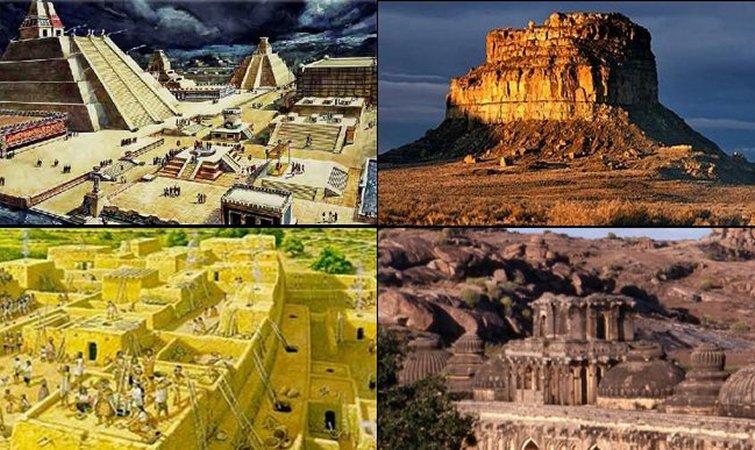Who Built Massive Astronomically Oriented Buildings In The Most Ancient Times?
A. Sutherland - AncientPages.com - A great number of archaeological sites and prehistoric monuments have revealed alignments towards celestial events that played an important role in the life of many ancient cultures in respect to agriculture, migration, hunting, and religious ceremonies.
These ancient cultures achieved a deep understanding of the celestial movements, cycles of the sun, moon, stars, and planets. The Aztecs of Tenochtitlán worshiped the Pleiades and had a sophisticated calendar based upon the idea of cyclical time.
From the astronomically oriented temple built on the apex of the hill, the priests watched as the Pleiades passed the zenith, signaling the salvation of the world.
Their world ended at the culmination of a 52-year cycle consisting of four groups of thirteen years each. Then was a time of celebration - a New Fire Ceremony.
Ancient Astronomers In Egypt
From at least the Middle Kingdom the Egyptians recognized five of the planets which they named "stars that know no rest".
They include Mercury ("Sebegu"), Venus ("the one who crosses" or "god of the morning"), Mars ("Horus of the horizon" or "Horus the red"), Jupiter ("Horus who limits the Two Lands") and Saturn ("Horus bull of the heavens"). Later many brighter stars were mapped into constellations like Orion, the Great Bear, and perhaps Draco and Leo.
During the same period complex "star-clocks" or calendars had been constructed which divided the night sky into 36 groups of stars. The Egyptian pyramids are perhaps the most known astronomically oriented structures in the world. Both the designers and builders of the perfectly aligned to true north, Great Pyramid at Giza, must be credited for their mathematical and technological skills.
 Hypostyle Hall of the Precinct of Amun-Re, as it appeared in 1838 in The Holy Land, Syria, Idumea, Arabia, Egypt, and Nubia. Public Domain
Hypostyle Hall of the Precinct of Amun-Re, as it appeared in 1838 in The Holy Land, Syria, Idumea, Arabia, Egypt, and Nubia. Public Domain
Some of the Egyptian temples had been aligned with the sun.
According to Sir Norman Lockyer (1836-1920), an English scientist and astronomer, the main axis of the Great Temple of Amun-Re at Karnak, Egypt points to the setting summer solstice sun.
Also, a smaller temple, southeast of the complex is oriented to the winter solstice sunrise.
Other temples of the New Kingdom period, like the Temple of Amenophis III at Luxor, were also oriented on the winter solstice sunrise. Many Egyptian temples even if not astronomically aligned, possessed inscriptions and graphical reliefs describing events related to celestial events. The Temple of Hathor at Dendera could be a good example.
The temple was used for the celebration of the New Year. Similar to the Aztecs who related their New Fire Ceremony to the Pleiades, the Egyptians observed the predawn reappearance of Sirius in their New Year ceremony.
Ancient Astronomers In America
A few years ago, several astronomical alignments have been discovered at Buena Vista, Peru. A 4200-year-old the Temple of the Fox, marking the position of the summer and winter solstices, was built on the top of an 11-meter-tall pyramid with precise alignments and sightlines providing a great astronomical calendar.
It is the oldest known celestial observatory in the Americas, built three millenniums before the Inca Empire emerged. There are many other ancient Andean temple sites that contain perfect 114-degree alignments and testify about a great astronomical knowledge of their creators. Who were the builders is yet another Andean mystery, but the unknown civilization possessed an advanced level of science.
The Maya civilization had a cult of Venus ("the morning star") which was celebrated in Mayan religion and represented their most important god Kukulcan (or "Kulkuykan, Gucumatz") being Quetzacoatl for the Aztecs. El Castillo, a Mayan pyramid at Chichén Itzá, has windows at the top of the pyramid, aligned with sunrises at the solstices and alignments with the sunset points of the equinoxes.
Chaco Canyon is a special place where remarkable astronomical alignment has been discovered. It was carved upon a cliff face at an altitude of 405 feet above the floor of Chaco Canyon. As we know Chaco Canyon was home to the amazing Anasazi people "the ancient ones" who lived there and then suddenly disappeared. Atop of Fajada Butte, which a prominent monument of the Chaco Canyon, there are three large sandstone slabs accompanied by two difficult to reach spiral petroglyphs.
The large spiral below the slabs is cut in two by a descending dagger of sunlight for eighteen minutes in the hour before local noon on the summer solstice. The same can be observed at Newgrange, passage-tomb, County Meath, Ireland.
Remarkable people who lived in a Hohokam ("those who have gone") village in Casa Grande, Southern Arizona had houses with windows oriented with solar and lunar events. Radial spokes of the Bighorn Medicine Wheel, near Sheridan, Wyoming which can be found at an altitude of 9,642 feet is also very interesting. They are aligned with the summer solstice sunrise.
The Bighorn Medicine Wheel, probably much older than we think, may also have other alignments oriented on summer solstice sunset and risings of bright summer stars and the Caracol, Chichén Itzá's circular tower observatory has orientations deliberately designed to mark the setting sun at the equinox and noteworthy alignments with the planet Venus and Sun.
There is the solstice diagonal of the upper platform, the zenith passage sunset, and the Venus northernmost setting.
Mysterious Teotihuacan - "The City of the Gods", is located 30 miles northeast of Mexico City. When the Aztecs found it, they gave them the name "Teotihuacan" and it was the place where time began and where the gods were born.
It was accurately laid out on a rectangular grid and an arrangement of ceremonial buildings of the city bear similarities to a precise scale model of our solar system.
Ancient Astronomers In India
Astronomy in India has a long history going back to pre-historic times.
 Study of astronomical sciences. source
Study of astronomical sciences. source
There are very many references to the Sun, Moon, stars, planets, meteors, etc., in Vedic literature before 1500 BC. It is said that the Sun is the Lord of the universe, and the Moon shines by the Sun’s light. Our planet Earth is described as a sphere.
Even occasional observations of the sky would reveal that there are three clear time-markers in the sky, and these are: a day, a lunar month, and a year. All the major ancient civilizations made attempts to understand the correlations among these time units.
A verse in Rigveda says: “The wheel (of time) formed with 12 spokes, revolves around the heavens, without wearing out. O Agni, on it, are 720 sons (that is, days and nights).”
One can say that the list of astronomically oriented structures around the world never ends. The ancients knew the sky and used astronomical signs and constellations, but their basic knowledge of the night sky was insufficient to build massive astronomically oriented buildings.
These were erected by unknown builders possessing not only advanced astronomical knowledge but also excellent technical skills.
Written by – A. Sutherland - AncientPages.com Senior Staff Writer
Copyright © AncientPages.com All rights reserved. This material may not be published, broadcast, rewritten or redistributed in whole or part without the express written permission of AncientPages.com
More From Ancient Pages
-
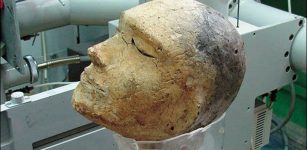 Mystery Of Unique 2,100-Year-Old Human Clay Head With A Ram’s Skull Inside
Archaeology | Apr 18, 2020
Mystery Of Unique 2,100-Year-Old Human Clay Head With A Ram’s Skull Inside
Archaeology | Apr 18, 2020 -
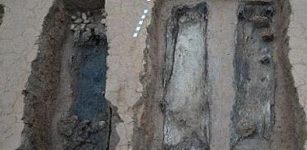 Large Collection Of 2,200-Year-Old Tombs With Boat Coffins Made Of Nanmu Wood, Unearthed In SW China
Archaeology | Feb 10, 2017
Large Collection Of 2,200-Year-Old Tombs With Boat Coffins Made Of Nanmu Wood, Unearthed In SW China
Archaeology | Feb 10, 2017 -
 Sole Survivor Recalls An Incredible Unexplained Mountain Mystery
Featured Stories | Aug 7, 2023
Sole Survivor Recalls An Incredible Unexplained Mountain Mystery
Featured Stories | Aug 7, 2023 -
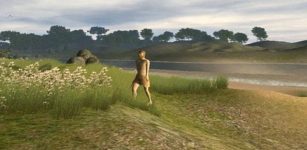 Lost World Of Doggerland: Parts Of Britain’s Sunken Stone Age Atlantis Discovered
Archaeology | Jul 4, 2012
Lost World Of Doggerland: Parts Of Britain’s Sunken Stone Age Atlantis Discovered
Archaeology | Jul 4, 2012 -
 Rare Ancient Roman Cauldron Discovered In Central Norway
Archaeology | Sep 16, 2019
Rare Ancient Roman Cauldron Discovered In Central Norway
Archaeology | Sep 16, 2019 -
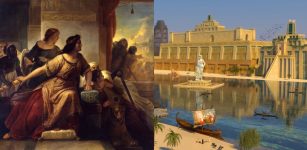 Mystery Of Queen Semiramis: Famous And Powerful Ancient Ruler And Warrior Queen
Featured Stories | Feb 15, 2018
Mystery Of Queen Semiramis: Famous And Powerful Ancient Ruler And Warrior Queen
Featured Stories | Feb 15, 2018 -
 Archaeological Enigma On The Træna Islands – What Happened To The Local Community?
Archaeology | Nov 28, 2023
Archaeological Enigma On The Træna Islands – What Happened To The Local Community?
Archaeology | Nov 28, 2023 -
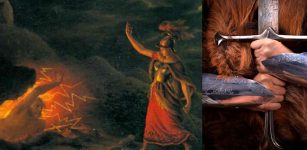 Shieldmaiden Hervör’s Dangerous Quest For The Cursed Tyrfing Sword
Featured Stories | Apr 20, 2023
Shieldmaiden Hervör’s Dangerous Quest For The Cursed Tyrfing Sword
Featured Stories | Apr 20, 2023 -
 X-Ray Reveal Ghostly Portrait Of Mary Queen Of Scots Hidden Underneath 16th Century Painting
Archaeology | Nov 3, 2017
X-Ray Reveal Ghostly Portrait Of Mary Queen Of Scots Hidden Underneath 16th Century Painting
Archaeology | Nov 3, 2017 -
 Missing Piece Of A Linguistic Puzzle: Ancient DNA Identifies The Originators Of Indo-European Languages Spoken By 40% Of The World
DNA | Feb 12, 2025
Missing Piece Of A Linguistic Puzzle: Ancient DNA Identifies The Originators Of Indo-European Languages Spoken By 40% Of The World
DNA | Feb 12, 2025 -
 Early Harappan Cultures Can Solve Mysteries Of Several Lost Cities Of Indus Valley Civilization
Artifacts | May 30, 2019
Early Harappan Cultures Can Solve Mysteries Of Several Lost Cities Of Indus Valley Civilization
Artifacts | May 30, 2019 -
 Ancient Mystery Of The Strange, Small Underground Being Who Secretly Emptied Casks
Featured Stories | Dec 8, 2024
Ancient Mystery Of The Strange, Small Underground Being Who Secretly Emptied Casks
Featured Stories | Dec 8, 2024 -
 Extraordinary Discovery Of ‘Time Capsule’ Belonging To Jules Verne – It May Contain Unpublished Works
Archaeology | Apr 19, 2017
Extraordinary Discovery Of ‘Time Capsule’ Belonging To Jules Verne – It May Contain Unpublished Works
Archaeology | Apr 19, 2017 -
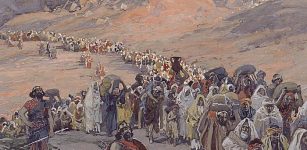 Why Were The Jews Exiled To Babylon?
Ancient History Facts | Jan 14, 2020
Why Were The Jews Exiled To Babylon?
Ancient History Facts | Jan 14, 2020 -
 Who Was King Menes? Mystery Of This Legendary Ruler May Go Back 20,000 Years
Ancient Mysteries | May 1, 2017
Who Was King Menes? Mystery Of This Legendary Ruler May Go Back 20,000 Years
Ancient Mysteries | May 1, 2017 -
 Vikings Had Dark Humor And Joked Even During Deadly Battles
Vikings | Aug 20, 2024
Vikings Had Dark Humor And Joked Even During Deadly Battles
Vikings | Aug 20, 2024 -
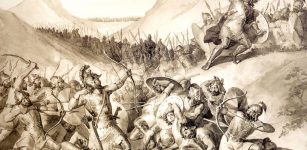 Armenia: Old Land Where Myths, Legends And Long History Meet
Civilizations | Apr 20, 2016
Armenia: Old Land Where Myths, Legends And Long History Meet
Civilizations | Apr 20, 2016 -
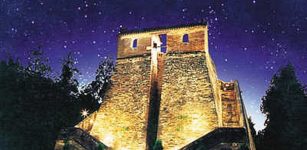 Gaocheng: China’s Oldest Observatory And Large Gnomon Installation Of The Ancients
Ancient Technology | Nov 5, 2016
Gaocheng: China’s Oldest Observatory And Large Gnomon Installation Of The Ancients
Ancient Technology | Nov 5, 2016 -
 Runic Inscription On The Viking-Age Galloway Hoard Deciphered
Archaeology | Feb 13, 2025
Runic Inscription On The Viking-Age Galloway Hoard Deciphered
Archaeology | Feb 13, 2025 -
 12,000-Year-Old Stones Found In Israel Could Be Earliest Evidence Of Wheel-Like Technology
Archaeology | Nov 13, 2024
12,000-Year-Old Stones Found In Israel Could Be Earliest Evidence Of Wheel-Like Technology
Archaeology | Nov 13, 2024

